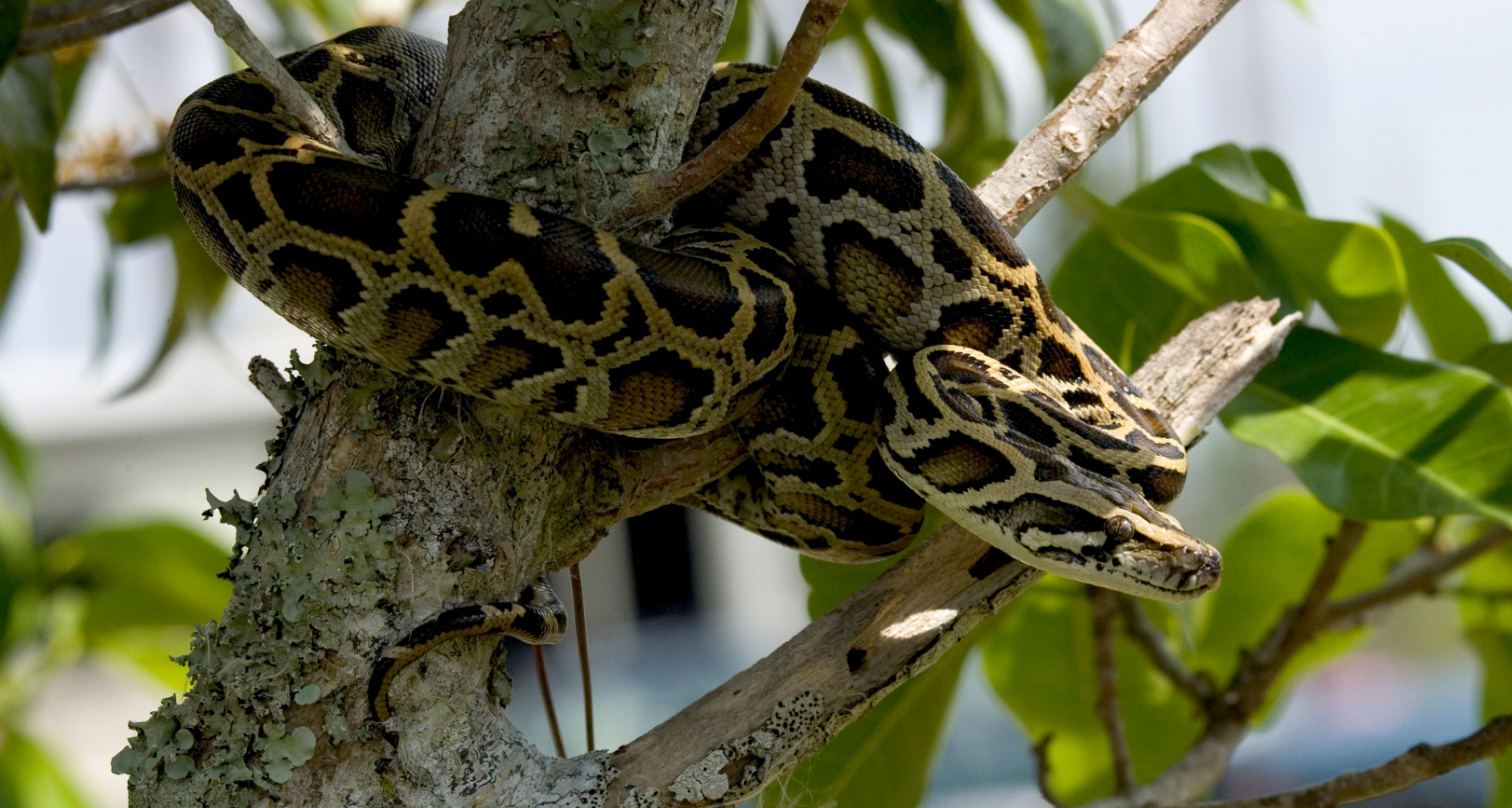Interspecies breeding is creating a slippery problem in Florida’s conflict with invasive pythons. A few years ago, scientists discovered that a significant number of the giant snakes stalking the Everglades are hybrids created as a result of breeding between two different species: Burmese pythons (Python bivittatus) and Indian pythons (P. molurus). Remarkably, these hybrids appear to be even better-adapted to this new environment than their separate parent species.
As their name suggests, Burmese pythons and Indian pythons are native to the tropical forests of Asia, not the wetlands of Florida. It’s believed the species were introduced to the state in the 1970s, most likely from the exotic pet trade. The population was given a boost in August 1992 when Hurricane Andrew wrecked a serpent breeding facility near the Everglades, releasing an unknown number of pythons into the wild.
The new swampy environment suited the pythons well – a little too well. The massive pythons quickly established a breeding population, outcompeting native species through their voracious appetite and predatory skills.
Ever since the python population exploded a few decades ago, a number of small mammal species like marsh rabbits, cottontail rabbits, and foxes have almost disappeared from the Everglades. A 2012 study found that the Everglades’ population of raccoons has fallen 99.3 percent, the opossum population 98.9 percent, and the bobcat population 87.5 percent – just since 1997.
Efforts to quell this invasion have barely made any headway, but scientists are still keen to keep tabs on the population to help find a solution.
A Burmese python hanging out in the Everglades National Park.
Image credit: R. Cammauf/National Park Service (Public domain)
In 2018, researchers from the US Geological Survey carried out a genetic analysis of about 400 Burmese pythons captured across a wide area of South Florida. The study was published in the journal Ecology and Evolution.
At least 13 snakes were found to be a genetic blend of Burmese pythons and Indian pythons, indicating they were the production of hybridization.
“The snakes in South Florida are physically identifiable as Burmese pythons, but genetically, there seems to be a different, more complicated story,” Margaret Hunter, a USGS research geneticist and lead author, said in a statement.
Often when two similar species interbreed, their offspring are put at a disadvantage. They might be infertile or face other challenges that make them less suited to the environment. Sometimes, however, the right combination can create a hybrid that can outperform its non-hybrid counterparts. This is what’s known as heterosis, or hybrid vigor.
“[Interbreeding] can lead to hybrid vigor, that is, the best traits of two species are passed onto their offspring. Hybrid vigor can potentially lead to a better ability to adapt to environmental stressors and changes. In an invasive population like the Burmese pythons in South Florida, this could result in a broader or more rapid distribution,” explained Hunter.
Meanwhile, the battle against invasive pythons continues. Part of the reason why the python population has been so tricky to control is that the snakes are extremely well-camouflaged to the environment. While advances in genetic sampling won’t solve the issue alone, it is providing scientists with a new weapon to better understand the threat.
“Our ability to detect Burmese pythons in the Greater Everglades has been limited by their effective camouflage and secretive behavior,” added Kristen Hart, a USGS research ecologist and a co-author on the study.
“By using genetic tools and techniques and continuing to monitor their movement patterns, we have been able to gain a better understanding of their habitat preferences and resource use. The new information in this study will help scientists and wildlife managers better understand these invasive predators’ capacity to adapt to new environments.”
Source Link: Hybrid Pythons Are Winning The Invasive Snake War In Florida Everglades
